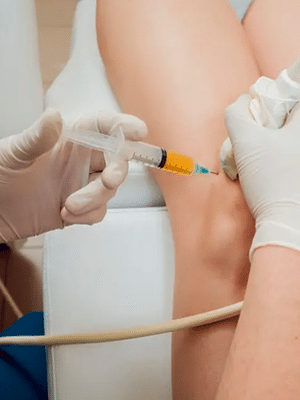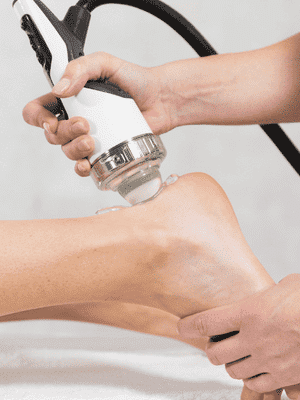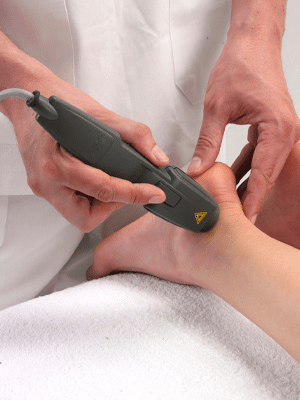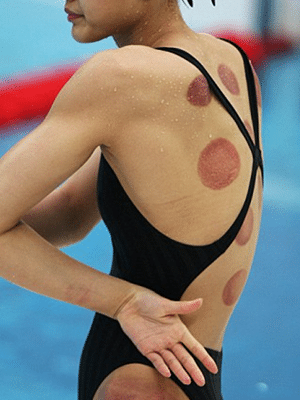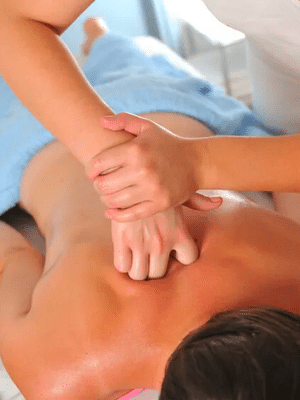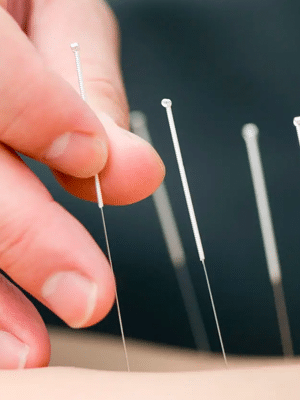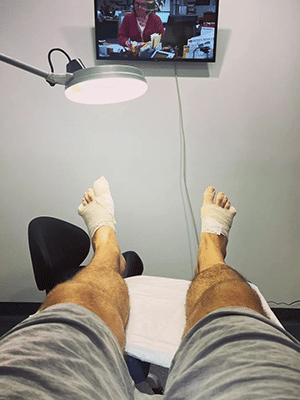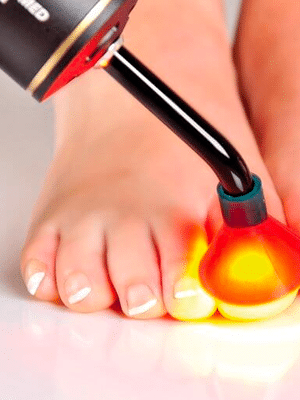Essential Steps During Your Fungal Nail Therapy:
If you are undergoing PACT therapy or have had your entire nail removed, following these key steps consistently will help achieve a more successful outcome.
Canesten*: Be consistent with the daily usage, morning and night. The liquid should be placed on all affected toes and surrounding toes.
*Note: If you have had the TNA procedure done. Please wait 4 weeks before commencing Canesten.
Shoe Zapping: Creating a clean environment for your feet to go back into is essential. We do ask patients to bring their shoes each appointment so they can be zapped each time.
We do recommend patients getting their own shoe zapper so they can continue this process daily once they have completed their therapy at the clinic.
Foot & Shoe Hygiene: Maintain proper foot hygiene by washing your feet daily and thoroughly drying them, especially between your toes. If reaching your toenails is difficult, using a hair dryer can be a helpful alternative to ensure your toes are completely dry before putting on socks. Always wear socks with your shoes to protect your feet, and avoid wearing damp shoes or socks.
Weekly Anti-Fungal Bath: Below is a video showcasing the antifungal bath process. This therapy, recommended once a week—ideally before your appointment—offers numerous benefits for combating fungal infections.
The antifungal bath uses agents such as tea tree oil or apple cider vinegar to create an environment that inhibits fungal growth. The warm water softens affected tissue, enhancing the penetration of the solution and making it easier to remove infected debris. Additionally, it promotes blood circulation, boosts the immune response, and helps reduce inflammation while soothing discomfort. With regular use, the antifungal bath cleanses the skin and lowers the risk of reinfection, supporting long-term foot health.
Ingredients:
- Apple cider vinegar cider
- Tea tree oil
- Methylated spirits
- A large foot bath
- Measuring cups
- Foot moisturiser
The formula for the foot soak is 10 drops of tea tree oil, 10 ml of Apple cider and 20ml of methylated spirits, mixed to 1L of water.


